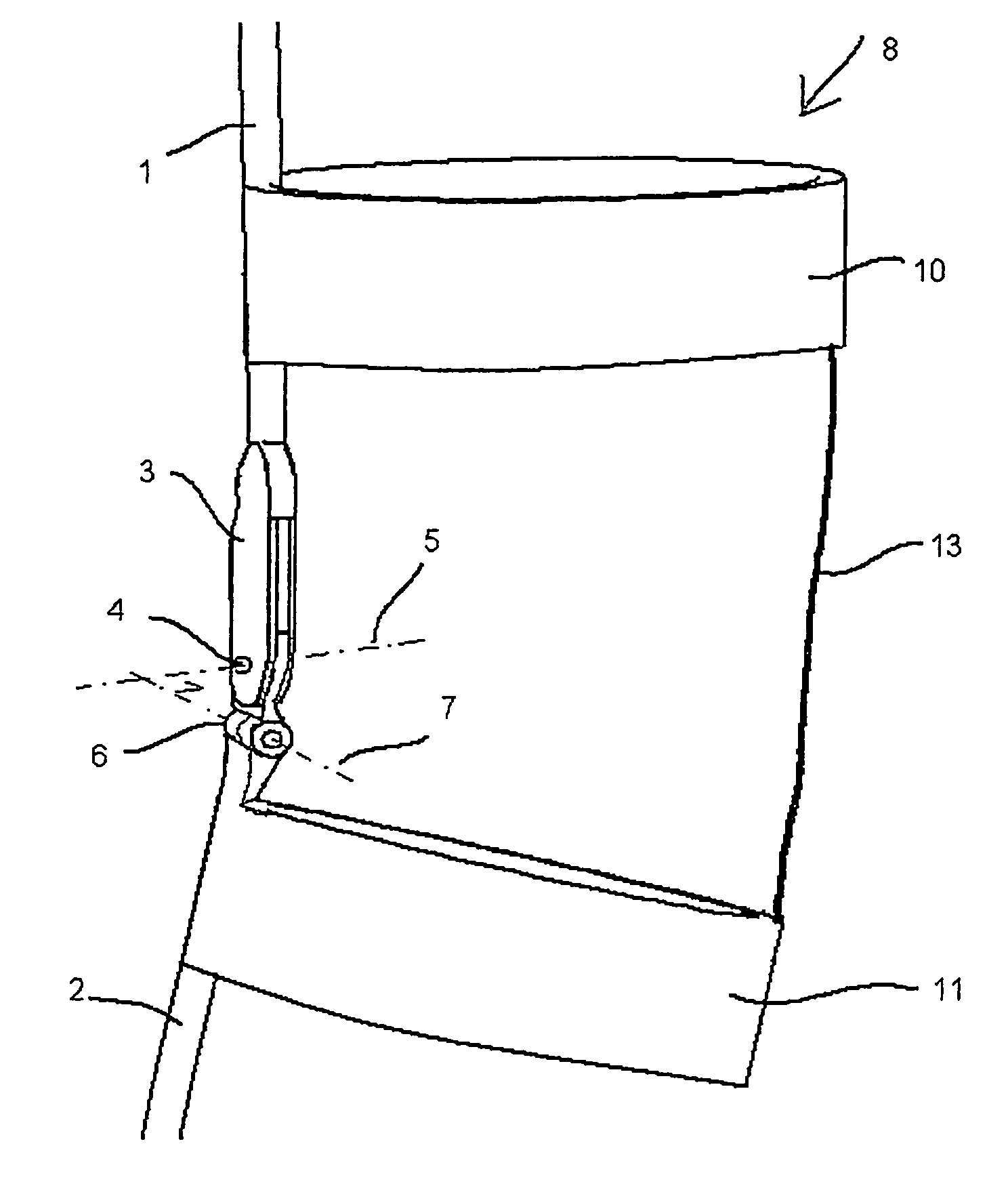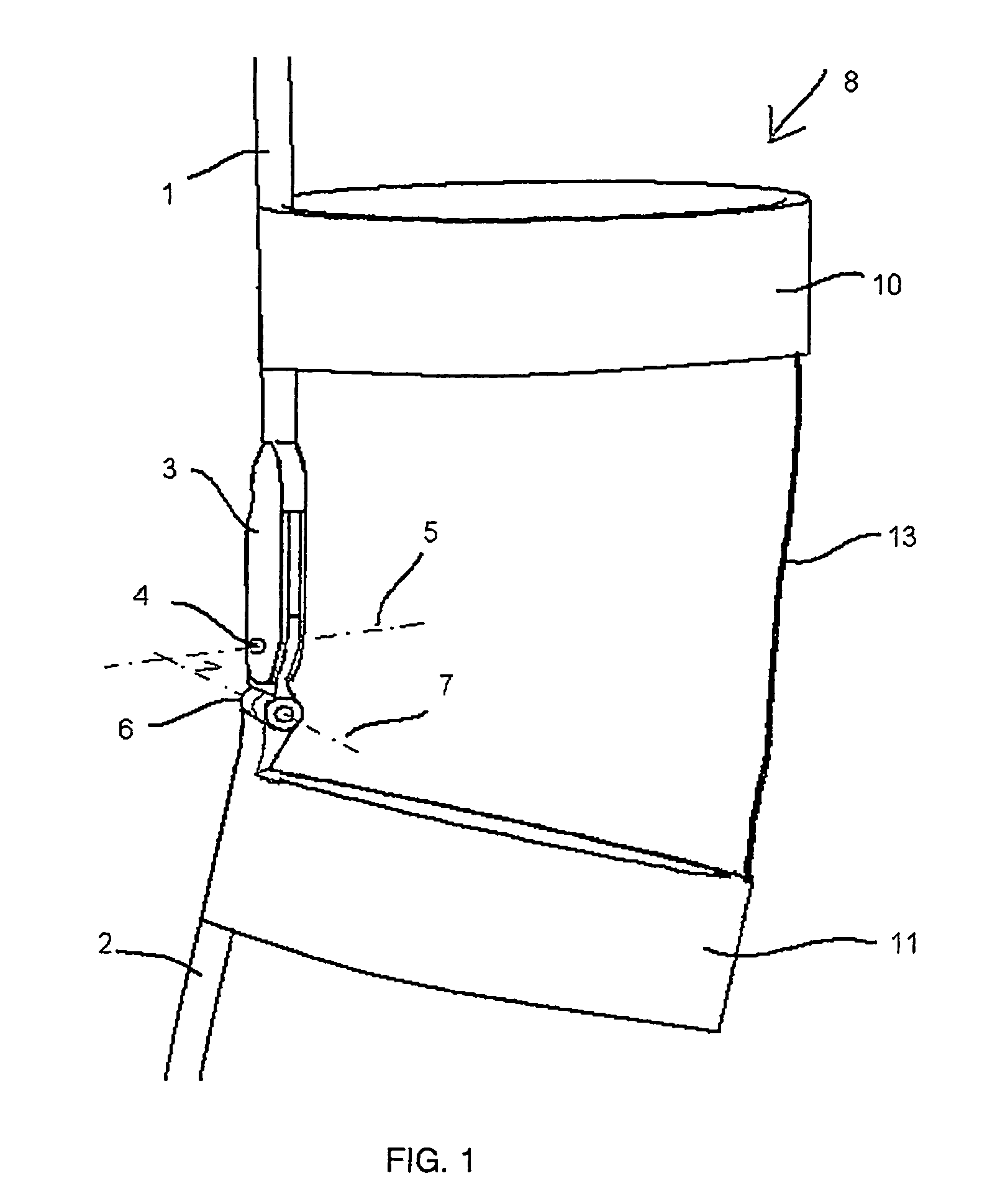Orthosis with multiple hinges
a technology of orthosis and hinges, applied in the field of orthosis or prosthesis, can solve the problems of orthosis having to be corrected afterward, difficult and laborious, and not readily predictable manipulation
- Summary
- Abstract
- Description
- Claims
- Application Information
AI Technical Summary
Benefits of technology
Problems solved by technology
Method used
Image
Examples
Embodiment Construction
[0023]Corresponding components are designated in all the figures with the same reference numerals.
[0024]FIG. 1 show an orthosis comprising an upper rod 1 and a lower rod 2 which are coupled hingedly to each other by means of hinge means 3. Hinge means 3 comprise an upper hinge 4 with a pivot axis 5 and a lower hinge 6 with a pivot axis 7. The pivot axes 5 and 7 correspond respectively with the usual pivoting movement of the knee and a swivelling movement substantially perpendicular thereto.
[0025]In order to fasten the orthosis 8 to the leg of a user, use is made of two sets of divisible rings with adjustable periphery, which in accordance with FIGS. 2, 3 and 4 are designated respectively 9, 10, 11, 12.
[0026]The rings 10 and 11 are connected to each other by means of a flexible, tensively strong element 13, for instance a strap or cord of optionally adjustable length, such that this element 13 functions as limit to the swivelling movement of hinge 6 and allows the knee to move unhind...
PUM
 Login to View More
Login to View More Abstract
Description
Claims
Application Information
 Login to View More
Login to View More - R&D
- Intellectual Property
- Life Sciences
- Materials
- Tech Scout
- Unparalleled Data Quality
- Higher Quality Content
- 60% Fewer Hallucinations
Browse by: Latest US Patents, China's latest patents, Technical Efficacy Thesaurus, Application Domain, Technology Topic, Popular Technical Reports.
© 2025 PatSnap. All rights reserved.Legal|Privacy policy|Modern Slavery Act Transparency Statement|Sitemap|About US| Contact US: help@patsnap.com



